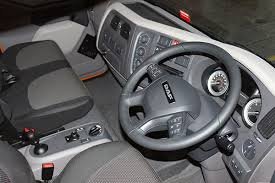
If you are making your way into the freight industry then let us assure you that you have committed to a wonderful field and might be in luck since the freight industry is rapidly increasing. However, if you are a newbie to it, it is most probable that you would be mixed up about a few similar terms but worry not because we are here to help you clear out your confusions, even the slightest ones.
Since entering into this field of career, it might have come to your notice through a little research or brochures and pamphlets provided to you by different companies, that most of these companies require a set of necessary licenses for you to be able to work with them. Some companies require LGV training while others preferably require HGV training. Firstly, we would suggest that you use the term ‘ license’ instead of ‘license’ looking up for these licenses in the UK.
The mere difference
LGV stands for Large Goods Vehicles whereas the HGV stands for Heavy Goods Vehicle.
According to the Law set by the UK and the whole of Europe, LGV and HGV are basically the terms commencing in the same category which applies to Lorries and trucks, vehicles which feature 3500kg of any kind of mass, beds, heavy household appliances, commercial appliances etc.
But where does the confusion lie? Often people confuse LGV training as training for Light Goods Vehicles for pickup vehicles such as buses and vans which carry a gross mass of under 3500kg.
Where did the terms arise from?
In the UK, heavy vehicles were taxed according to the many attributes of that vehicle which included its emission, construction, the type of fuel it consumes, and the reason these vehicles were used for. Hence the terms HGV arose when the tax disc had arrived in order to put in categories, what these vehicles were accustomed to in taxes. It was years back when the vehicles that carried gross weight under 3500kg were named as Light Goods Vehicles and the ones above this range of mass were referred to as High goods vehicles.
However in the course of 1992, in order to meet the European license categories a lot of licensing methods were formulated, including vehicles which weigh more than 3.5 tons were then known as trucks and hence, the LGV term began to be referred as the Large Good Vehicles instead of Light Goods Vehicles.
Why does the confusion still lie?
Since this change of method was not centuries ago, most of the people still have fresh memories of the old one and often prefer to continue using them, even in the professional platform so need not to be confused when you apply for a job requiring LGV class 1 training.
There are still a number of training services to help you guide about the differences and types of training required by specific companies. So even if you are confused out there, need worry not as there will be hands to hold on to and move further into perusing your credible careers.
To the question in your title, my Magic 8-Ball says:
Hi! I'm a bot, and this answer was posted automatically. Check this post out for more information.
Downvoting a post can decrease pending rewards and make it less visible. Common reasons:
Submit